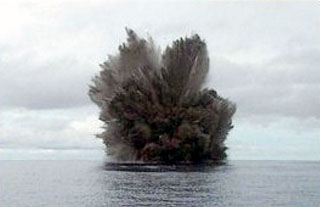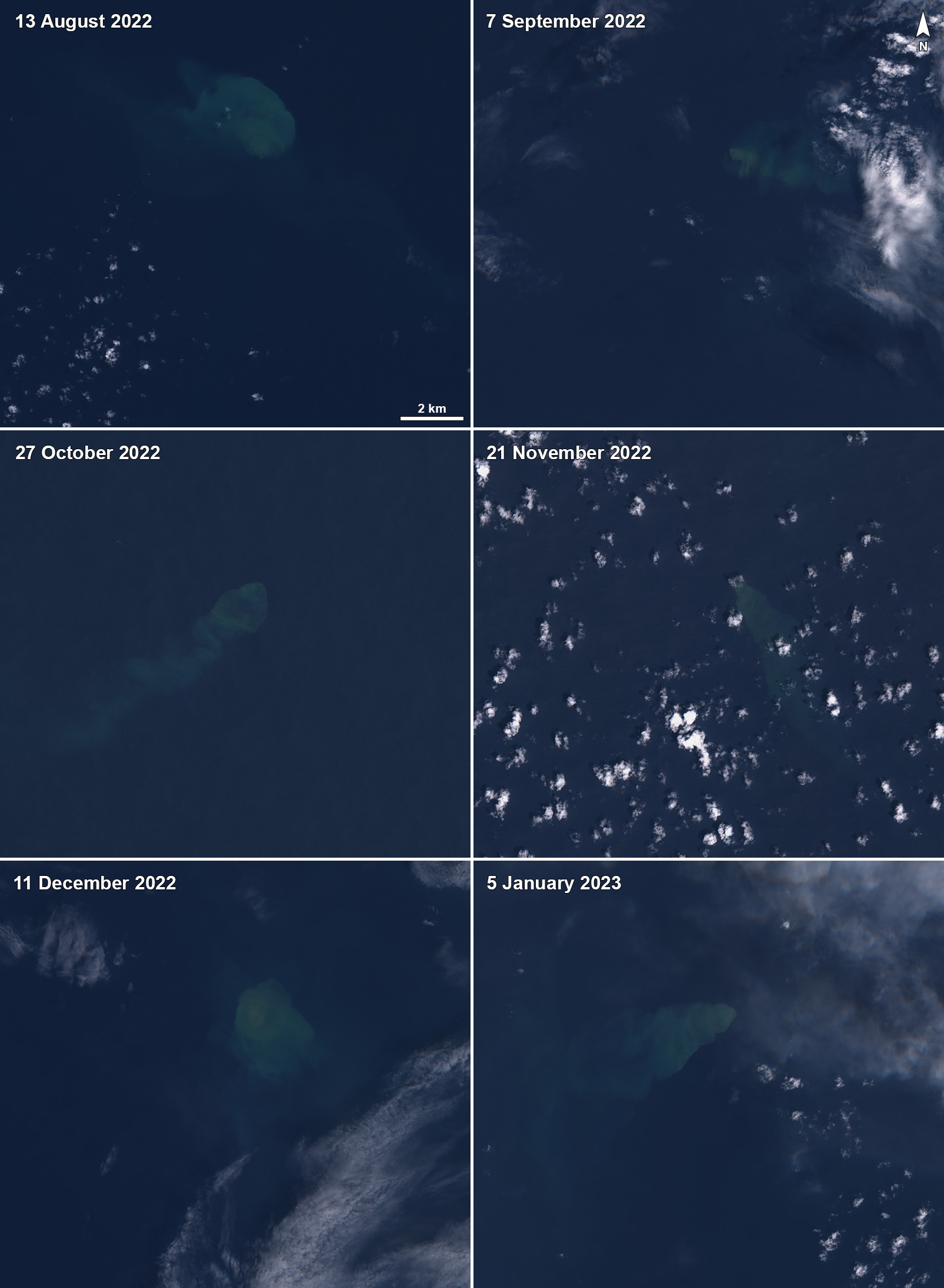Report on Kavachi (Solomon Islands) — March 2023
Bulletin of the Global Volcanism Network, vol. 48, no. 3 (March 2023)
Managing Editor: Edward Venzke.
Edited by Kadie L. Bennis.
Kavachi (Solomon Islands) Discolored water plumes observed intermittently during August 2022-January 2023
Please cite this report as:
Global Volcanism Program, 2023. Report on Kavachi (Solomon Islands) (Bennis, K.L., and Venzke, E., eds.). Bulletin of the Global Volcanism Network, 48:3. Smithsonian Institution.
Kavachi
Solomon Islands
8.991°S, 157.979°E; summit elev. -20 m
All times are local (unless otherwise noted)
Kavachi is an active submarine volcano in the SW Pacific, located in the Solomon Islands south of Gatokae and Vangunu islands. Its first recorded eruption occurred in 1939, and since then it has produced many ephemeral islands up to 1 km long where occasionally lava flows were observed. Volcanism has been characterized by phreatomagmatic explosions that ejected steam, ash, and incandescent bombs. The previous report described intermittent discolored water plumes based on Sentinel-2 natural color satellite imagery (BGVN 47:08). This report covers similar activity of discolored water during August 2022 through January 2023 using satellite imagery.
Observations using Sentinel-2 natural color satellite imagery showed occasional discolored (light yellow-green) submarine plumes that generally originated from a single point during each month of the reporting period (figure 28). The discolored water drifted or extended in various directions, usually different with every observation. Four discolored plumes were visible on 3, 8, 13, and 23 August; a translucent, milky brown color surrounded the origin point on 8 August, and as the plume extended S the color was lighter yellow-green. Four discolored plumes were visible on 2, 7, 12, and 22 September; the plume on 7 September extended for several kilometers to the SE and the area around the origin point was a translucent milky brown color (figure 28). The color of the plumes on 12 and 22 September appeared less intense compared to the previous plumes during the month.
Plumes were detected in satellite imagery drifting various directions on 2, 7, 12, 17, and 27 October, with additional sightings on 1, 6, and 21 November. A weather cloud covered most of the view of the discolored plume on 6 December, though on 11 December the affected area seemed relatively stationary above the origin point (figure 28). There was a small translucent circle of milky brown discolored water in the center, surrounded by lighter yellow-green discolored water. On 16 December a faint discolored plume extended NE. A strong discolored plume was visible on 5 January 2023 that extended W; the water around the origin point was a translucent, milky brown color that lightened to yellow-green as it extended farther away (figure 28). On 15, 20, and 30 January the plumes extended W, W, and NE; the plumes on 15 and 30 January were relatively narrow and were several kilometers long.
Geological Summary. Named for a sea-god of the Gatokae and Vangunu peoples, Kavachi is located in the Solomon Islands south of Vangunu Island. Sometimes referred to as Rejo te Kvachi ("Kavachi's Oven"), this shallow submarine basaltic-to-andesitic volcano has produced ephemeral islands up to 1 km long many times since its first recorded eruption during 1939. Residents of the nearby islands of Vanguna and Nggatokae (Gatokae) reported "fire on the water" prior to 1939, a possible reference to earlier eruptions. The roughly conical edifice rises from water depths of 1.1-1.2 km on the north and greater depths to the SE. Frequent shallow submarine and occasional subaerial eruptions produce phreatomagmatic explosions that eject steam, ash, and incandescent bombs. On a number of occasions lava flows were observed on the ephemeral islands.
Information Contacts: Sentinel Hub Playground (URL: https://www.sentinel-hub.com/explore/sentinel-playground).


